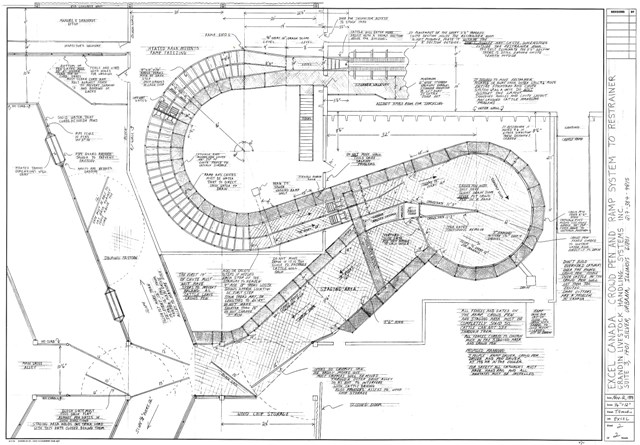 Figure 1: Drawing of a bison handling facility featuring curved chutes and sorting pens
Figure 1: Drawing of a bison handling facility featuring curved chutes and sorting pens
 Figure 2: Round crowd pen and curved race system for handling cattle
Figure 2: Round crowd pen and curved race system for handling cattle
My mind works like Google for images and I think in photo realistic pictures. Children and adults who are visual thinkers will often start producing beautiful drawings when they are in elementary school. Parents and educators should encourage children who have natural art ability to develop it. When I was little, painting pictures and art were encouraged. I was also encouraged to draw many different things. If children like to draw pictures of trains they should also be encouraged to draw other things such as train stations or places the train travels to.
When I first started designing cattle handling facilities, I had difficulty relating schematic representations of different parts of a building on a floor plan to the actual building I saw in my photo realistic imagination. To learn how to read the floor plan and relate it to the pictures in my imagination, I took floor plans of a house and a large meat plant and walked around in the building until I could relate every feature of the building to the drawing. I had to learn that a square on the drawing represented a concrete support column and a circle represented a water tank. I also visited many cattle feedlots and measured their cattle handling facilities and then made scale drawings of them. After I made the drawing I returned to the feedlot and walked through the facility with my drawing to check it’s accuracy. It took about three years to “program” my brain to read blueprints and floor plans. After I learned how to do this, I could look at a new floor plan and instantly “see” the finished building or cattle handling facility in my imagination. Another think I had to do was “download” into my brain the components of many different cattle handling facilities. I described this process in my book “Thinking In Pictures.”
In “Thinking In Pictures,” I describe how my ability to draw elaborate blueprints of livestock handling facilities almost magically appeared after I had observed a talented draftsman named David. I copied his style and used the exact same drawing tools. Below are two of my drawings. These drawings were done by hand with a pencil, ruler, straight edge, an a compass.
 Figure 1: Drawing of a bison handling facility featuring curved chutes and sorting pens
Figure 1: Drawing of a bison handling facility featuring curved chutes and sorting pens
 Figure 2: Round crowd pen and curved race system for handling cattle
Figure 2: Round crowd pen and curved race system for handling cattle
What I did not realize when I wrote “Thinking In Pictures” is that there was a long period of observation BEFORE I started drawing good drawings. My visual memory had to be programmed with two things: understanding how to read floor plans and programming my brain with drafting skills that I had learned by watching David.
I strongly urge all young people who want to become designers, graphic artists, or drafting specialists to develop their hand drawing skills. I am 61 now and I watched the transition from hand drafting to computer aided drafting. The older people who drew beautiful drawings by hand also drew beautiful drawings on the computer. The younger people who never learned to draw by hand often made strange mistakes on drawings. It appeared that they did not “see” what they were drawing. The center of the circle on the round crowding pen would not be in the center. They did not see the mistake because they had never experienced holding a compass in their hand and rotating it to make a circle. They also made mistakes such as 25 ft (4m) long gates that could not possibly work. In my consulting work with many livestock companies, I saw the same “perceptual” mistake over and over. They all came from people who had never learned to draw by hand. Many of these people had also never experienced building things with their hands either. It seems that the computer mouse is not hooked up to the brain the same way the hand is. I think people need to be able to “feel” what they are drawing in order for it to be accurate. In the future there will be virtual reality systems where a person can “hold” and “touch” the building or thing they have drawn. When these “touch” devices become available, people may be able to skip the need for learning hand drawing first. Hand drawing may no longer be required for good technical drafting, but learning how to draw by hand is an art form that will develop a person’s aesthetic skills. If you are a parent of a child with either autism or Asperger’s who has good drawing skills, you should develop these skills. Having a skill that others appreciate and want will help your child to have a more satisfying life.
 Click here to return to the Homepage for more information on animal behavior, welfare, and care.
Click here to return to the Homepage for more information on animal behavior, welfare, and care.